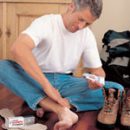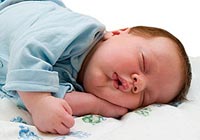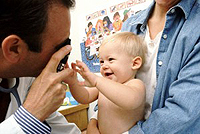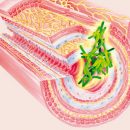What is a disease? Causes and symptoms of polio. Diagnosis and treatment of polio. 5 questions about poliomy.
Content
Question # 1. What is this disease?
Polio
- acute infectious disease that in some cases proceeds
Without visible symptoms, in others leads to deadly
Paralyach. After the widespread introduction of vaccination poliomyelitis almost
disappeared from developed countries.
Small
Flashing polio still occur, usually in those layers of the population,
who have not passed immunization. Most often polio disease
in summer and autumn. Previously, the children suffered from this disease,
Now the age of sick usually exceeds 15 years. Among the sickness
Children Paralytic form of polio prevails in boys.
Forecast
depends on what bodies and systems are amazed. If Central
The nervous system remains untouched, prognosis is favorable. However
Bending the head and spinal cord infection can lead to
paralymps and death of patients. On average mortality ranges from 5 to 10%.
Question # 2. What are the causes of polio development?
Pathogens
infections - polyoviruses of three serotypes, each of which
Can cause poliomyelitis. These polyoviruses are common
Everywhere and transmitted from person to man. Habitat
Polioviruses - mucous disposal of nasopharynses and feces. Incubation
The period can last from 5 to 35 days.
Question number 3. What are the symptoms of the disease?
Distinguish
Three main forms of infection. Inapparantant (subclinical) poliomyelitis
observed in 95% of cases. On the share of abortive (easily flowing)
Poliomyelitis accounts for 4 to 8% of all cases. It is characterized
slight increase in temperature, malaise, headaches,
pain in the throat, pharyngitis and vomiting. Usually after 72 h occurs
recovery. Most often, inapparantant and abutting poliomyelitis
Stay unrecognized.
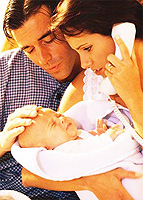 but
but
The third type of infection is striking the head and spinal cord and
divided into non-paralytic and paralytic poliomyelitis.
Non-paralitic poliomyelitis causes moderate temperature increase,
Headache, vomiting, decay of forces, irritability and pain in the area
neck, back, arms, legs and in the stomach. Muscle pain and
twitching the muscle extensors of the neck and back. Symptoms usually pass
a week later; Approximately 2 weeks persistent.
Paralytic
Poliomyelitis is usually evolving within 5-7 days after increasing
Temperature. Symptoms are similar to non-paralytic symptoms
Poliomyelita. Characteristic signs: asymmetric weakness of various
muscles, loss of superficial and deep reflexes, spontaneously
arising unpleasant feelings of numbness, tingling, burning,
Increased sensitivity to touch, urine delay, constipation and
Owl of belly. The degree of severity of paralysis depends on the defeat
spinal cord (suffer from cervical, chest and lumbar).
Much
Rabbar polomelitis is less common. It's the hardest form
Diseases at which bulbar motor kernel amazed
Card nerves. Symptoms: weakening muscles managed by cranvy
nerves; brain inflammation develops; Speech disorders are observed,,
chewing, swallowing; There is an inverse movement of food through the nose; dyspnea,
violation of the rhythm, frequency and depth of breathing; Possible Stop breathing,
Lightweight and shock swelling, leading to the death of the patient.
Special
Danger represent complications after polio: high blood
Pressure, urinary tract infection, urolithiasis, atelectasis,
Pneumonia, myocarditis, pulmonary heart, skeletal deformation and
soft tissues, paralytic intestinal obstruction. Many
Polyomyelitis complications are developing due to long immobility
and bad work muscles providing breathing.
Question number 4. How poliomyelitis is diagnosed?
For
diagnosis is necessary at an early stage of the disease to allocate
polyovirus from nasooplotoric discharge, cunning fluid or
KALOV MASS. Other viral infections should be eliminated.
Question number 5. How to treat the disease?
Treatment
support. Pick-pool are prescribed. With poliomyelitis
use morphine is not recommended because it increases
Danger of oppression of breathing. The use of wet heat can reduce
Muscular cramps and pain.
Bed
The mode is required only for the time of pronounced symptoms. Recovery
The period after paralytic polio can be very long.
At this time, physiotherapy, orthopedic devices are used,
Corrective shoes and, in some cases, orthopedic surgery.


